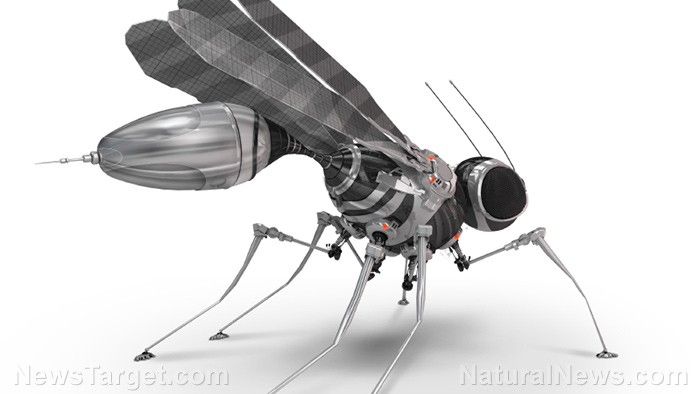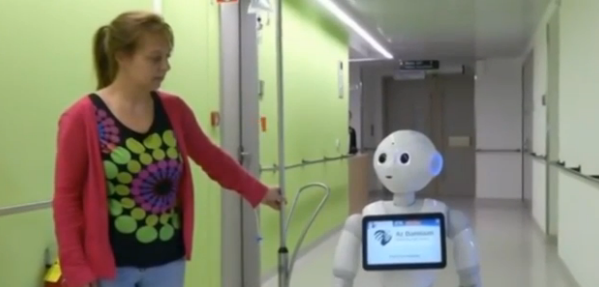Surgeons are no longer bound by the happenstance of their geographical placement to perform surgeries. In 2001, the first long-distance robotic surgery, or telesurgery, was performed when a doctor in New York removed a patient’s gallbladder in France. The routine was a remarkable success and the technology has since taken the medical community by storm.[1]
Telerobots, which are indirectly controlled by doctors in a separate location, are expected to become more commonplace as technology advances. Although robotic surgery has yet to become conventional surgery, the sale of medical robots is increasing by 20 percent each year.[1]
The benefits of telerobots are many. They’re perfect for situations that are too dangerous for people, including fighting fire in chemical plants, deactivating bombs or freeing someone buried under rubble. In fact, doctors could use telerobots to operate on soldiers hundreds or thousands of miles away.
Beyond a narrow range of experimental surgeries performed remotely, doctors use surgical robots today to operate on a patient in the same room through a secure, built-in connection. They typically allow surgeons to remove tumors and repair heart valves, among other procedures, in a less invasive way. In addition, they use a communication channel that doesn’t rely on publicly available networks.[1]
These same telerobots may one day be used to provide medical treatment in rural areas, battle zones, regions plagued by natural catastrophes, underwater and even outer space.
Stay aware of the latest cyber attacks by visiting CyberAttack.news powered by Fetch.news.
A double-edged sword
Like all technology, telerobots are a double-edged sword of virtues and vices. This same technology could be susceptible to cyber attacks, which terrorists seize upon to make surgical procedures go awry. In other words, telerobots aren’t immune to the intervention of a third party in the same way a doctor standing in the same room is.
A team of researchers from the University of Washington decided to see how vulnerable the telerobots were to cyber attacks. By hacking the router that linked the doctor to the robot, the researchers were able to alter the instructions to make the robot’s motions jerky and irregular.
They made the motion longer and shorter than intended, launched an automatic stop mechanism that thwarted the surgery and eventually took control of the entire medical procedure. The researchers also discovered that the video that enabled the surgeon to conduct the surgery was publicly available.
Surgical robots approved by the FDA today do not operate on public channels and so, are immune to these kinds of cyber attacks. Nevertheless, if telerobots are to be used in dangerous locations, like in the midst of natural disasters where private networks aren’t an option, then it’s important to start designing and adding security features now.
“If there’s been a disaster, the network has probably been damaged too. So you might have to fly a drone and put a router on it and send signals up to it,” explained Howard Chizeck, University of Washington (UW) professor of electrical engineering and co-director of the UW BioRobotics Lab.[2]
“In an ideal world, you’d always have a private network and everything could be controlled, but that’s not always going to be the case. We need to design for and test additional security measures now, before the next generation of telerobots are deployed.”[2]
A highly delicate procedure
Surgeries are delicate, require keen precision and acute awareness. The slightest disruption during a surgical procedure can be fatal for the patient. Consequently, researchers have offered multiple suggestions about how telesurgeries could be made more secure.
Encrypting data packets that vacillate between the robot and operator could thwart certain types of cyber attacks. Regardless, these don’t work against service attacks that flood the system with superfluous information. Coupled with a video, encryption increases the risk of producing intolerable disruptions in communication between the robot and operator.
By monitoring the forces and torques an operator applies on a console instrument and the way he or she interacts with the robot, however, researchers have developed a way to verify the operator’s identity.
“Just as everyone signs something a little bit differently and you can identify people from the way they write different letters, different surgeons move the robotic system differently,” Chizeck noted. “This would allow us to detect and raise the alarm if all of a sudden someone who doesn’t seem to be operator A is maliciously controlling or interfering with the procedure.”[2]
Sources include:
[1] PopSci.com
[2] Phys.org




















